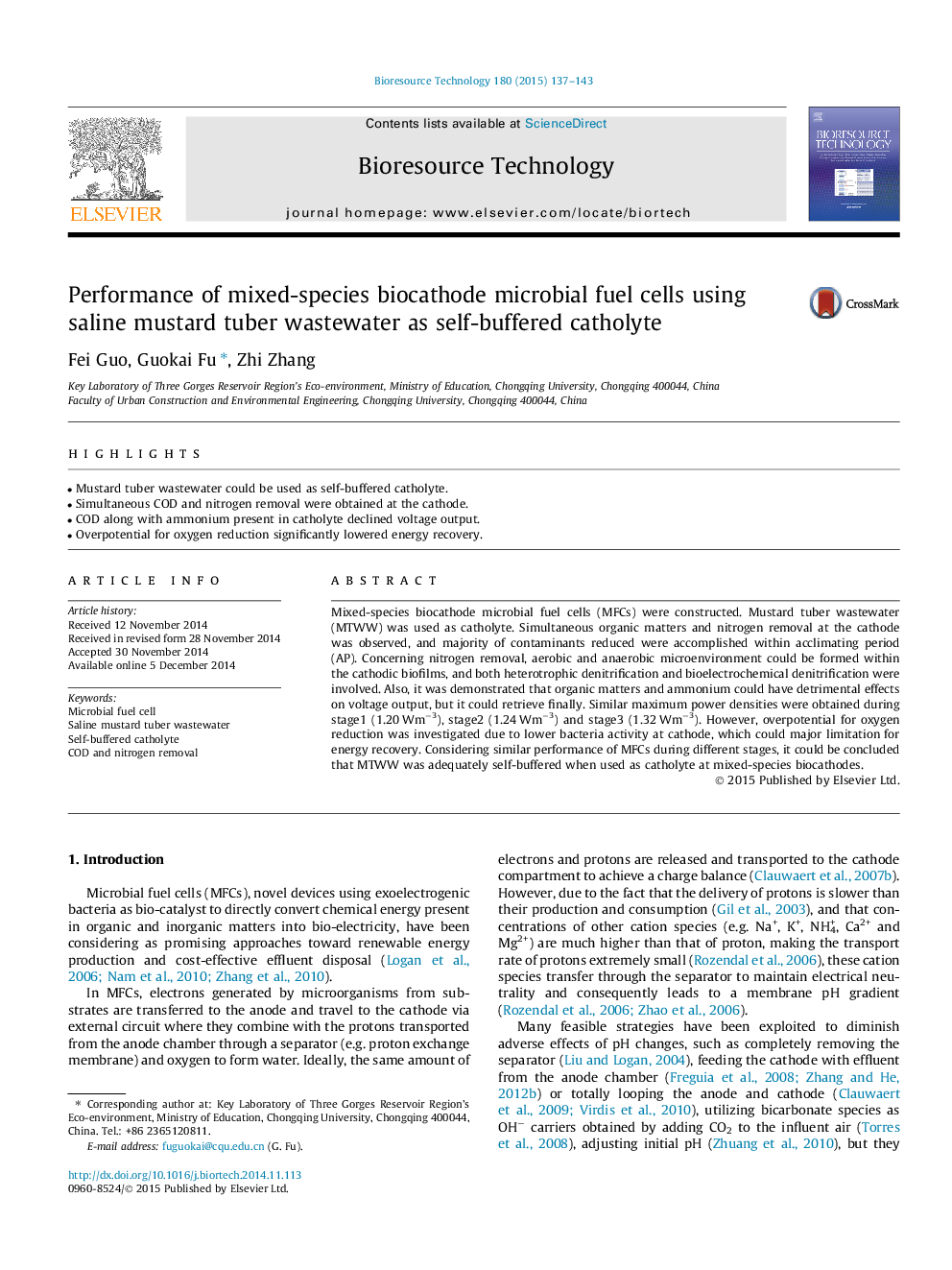| Article ID | Journal | Published Year | Pages | File Type |
|---|---|---|---|---|
| 680025 | Bioresource Technology | 2015 | 7 Pages |
•Mustard tuber wastewater could be used as self-buffered catholyte.•Simultaneous COD and nitrogen removal were obtained at the cathode.•COD along with ammonium present in catholyte declined voltage output.•Overpotential for oxygen reduction significantly lowered energy recovery.
Mixed-species biocathode microbial fuel cells (MFCs) were constructed. Mustard tuber wastewater (MTWW) was used as catholyte. Simultaneous organic matters and nitrogen removal at the cathode was observed, and majority of contaminants reduced were accomplished within acclimating period (AP). Concerning nitrogen removal, aerobic and anaerobic microenvironment could be formed within the cathodic biofilms, and both heterotrophic denitrification and bioelectrochemical denitrification were involved. Also, it was demonstrated that organic matters and ammonium could have detrimental effects on voltage output, but it could retrieve finally. Similar maximum power densities were obtained during stage1 (1.20 Wm−3), stage2 (1.24 Wm−3) and stage3 (1.32 Wm−3). However, overpotential for oxygen reduction was investigated due to lower bacteria activity at cathode, which could major limitation for energy recovery. Considering similar performance of MFCs during different stages, it could be concluded that MTWW was adequately self-buffered when used as catholyte at mixed-species biocathodes.
